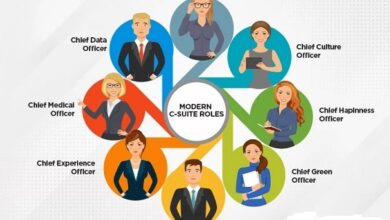What is ERP and how does it work Advantages Types and How to plan
ERP
In this article we will provide you the information about ERP and how does it work Advantages Types and How to plan.
Artificial intelligence and the automation of tools and processes are increasingly present in companies, becoming essential in optimizing the various work activities. One of the most important current management software is ERP (Enterprise Resource Planning), translating: Business Management System or Integrated Management System or Enterprise Resource Planning .
ERP is an intelligence that centralizes and integrates processes and information from the different sectors of the company, which facilitates the management of processes, projects and people.
If you want to know more about ERP, its functions, implementation process and the different types on the market, read on and stay on top of innovations in the management and HR area that will scale your company!
What is ERP and what is its function
Enterprise Resource Planning is a software that has been evolving since the second half of the 20th century.
It is designed and formatted by Software Architecture, a sector in the market that is increasingly important and recognized for economic activities in Brazil and in the world.
ERP is an intelligence and automation tool that integrates and centralizes processes and information, providing in- depth and reliable diagnoses, in addition to directing growth and improvements.
Therefore, it is a central management software for all sectors, activities and employees in a company. In this way, it is a determining instrument for the growth of an organization.
The ERP is a single base that gathers, stores and makes available processes and information in order to meet bureaucratic demands, improvements in the quality of processes and guarantee autonomy in the routine tasks of the sectors.
This engine ensures smoother, more streamlined process flows for cost savings and a significant increase in productivity.
The ERP is programmed with several functionalities that simplify operational processes, guarantee data security and transparency of actions – internally in the company, with partners and with its customers.
The ERP, when implemented in the company, manages to centralize and integrate activities and processes to accompany the organization in its path.
For this reason, this intelligence is compatible and useful for all types of companies (small, medium and large) as it tracks growth, provides improvements and more accurately identifies opportunities and resolutions.
In addition, ERP technology promotes the integrated management of data from different sectors, which includes managing:
- BI (results);
- BPM (process control);
- E-commerce;
- EDM (electronic document management);
- Supervisor;
- HR ;
- CRM (customer relationship and sales).
This technology has very clear processes and specific operating modules. To go even deeper into this system, we’ll understand it better below.
How ERP works in practice
As we mentioned, ERP centralizes and analyzes data and information, which makes it a central element of the company’s operations.
For this reason, ERP can work fully in a company or associated with other intelligence software that the business already uses.
But it is always important to check the compatibility between them. The ERP has three working layers: PRESENTATION → LOGICAL PROCESSING → STORAGE.
1-Presentation
The Presentation gives access to the system through forms to be filled out. This moment in the program is responsible for transmitting this information to processing.
2-logical processing
Processing receives the information and makes the integration, that is, it generates reports and analysis , responding to the user about storage requests.
But it’s important to know that this layer receives constant updates.
Remember that this is necessary for the software to always be at the same level of evolution with the market and technology , in order to meet your demands in the best possible way.
3-Storage
It is the final automation process, which saves files in a database and is made available to the manager for possible exports.
At first, the ERP will be of exclusive use to the manager, helping him to manage accounts, monitor sales and track purchase orders.
Once installed and inserted into routine tasks, its usefulness is transferred to people management , with information on productivity, organization, allocation of time and activities , in addition to monitoring the employees’ cycle .
This means that the HR sector can dedicate itself more to activities of greater value to the company and employees, such as a career plan, recruitment courses, among others.
In addition to these functionalities, ERPs also have Data Security processes and visibilities that are distinct from these.
Most ERP software works with cloud storage, which provides less data loss, quick recovery and access to instruments such as: Encryption, Firewalls, Control and Data Access.
Therefore, there are different layers of protection: one that makes information inaccessible to those who are not authorized, another that oversees the flow of information and possible attacks on the system, and the last, that restricts and monitors access.
As for visibility, it is possible to work with the ERP in a Departmental View, seeing all areas by activity, and a Segmented View, understood by sectors separately.
Advantages of implementing ERP in your company
This entire process sets up countless benefits for the company in relation to management, that is, its operating base. Among them, we can mention:
- greater integration between processes, employees, sectors and projects;
- internal communication without noise and more efficient;
- less duplication of information and errors;
- faster and more effective problem solving;
- more accurate, effective decision making and better insights;
- fewer deadlocks between customers and suppliers;
- lower cost in management, in solving errors and mismatches;
- greater scalability through modernity and automation;
- better financial control;
- flexibility and customization of management according to your business;
- transparency and security;
- more clarity in the processes;
- constant monitoring of activities.
How to make the Basic ERP Plan
Best of all, payment is made only for the module you use, which does not generate unnecessary expenses or waste. But how to choose the best combination of modules?
1-identify the demand
You need to recognize your company’s demands for intelligence, automation and organization. To do so, rate:
- low productivity points;
- communication with frequent noises;
- areas with many processes and little control;
- absence of metrics, KPIs, in decision, strategy and diagnosis sectors;
- missed opportunities;
- time spent on bureaucratic activities that should be automated;
- manager without direct access to information, which demands search time and even longer time for diagnosis and solutions;
- wide variety and complexity of suppliers;
- disconnection between the software already used in the company;
- frequent difficulties of the company’s management with norms and legislations;
- difficulty in sharing information quickly and efficiently.
2-Search for information and tools
With the identified demands, it is time to seek knowledge and possible tools available that are compatible.
Remember to check the ERP integration with other software used in the company and also evaluate the supplier.
3-Evaluate the supplier
All of the previous processes presented here are important for software evaluation, but that’s not enough to evaluate the vendor.
In this sense, don’t forget that you also need to make this new partner compatible with your business.
To do so, assess the supplier’s profile, history, customer service data, whether they are following the constant evolution of the market and how their monitoring work works for companies.
In addition, it is more than necessary to have a Monitoring Team available so that the implementation can be completed efficiently, and that support happens over time.
Review the budget: cost-effective
Understand the different forms of payment and how the process of adding new modules works when necessary. Evaluate the cost and dimension the future impact of this management system on your company.
4-Create the deployment project
Make an Implementation Plan with the supplier . Organize deployment processes, time and training methodologies.
Remember that changes are slow and happen differently for each sector and employee. Thus, having an organization of “novelty” helps the absorption and adaptation of everyone and processes to intelligence.
5-Offer efficient training
Promote and ensure efficient training regarding the platform and new processes. Understand that it is a time to adapt and employees will need assistance.
Remember the supplier’s Follow-up Team, but also plan internal training, listen to feedback and be open to your collaborator.
6-Maintain active project management
ERP is an integrated management system, so even though automations simplify processes, it is necessary to frequently monitor the platform, its data and information.
In addition, the manager must always be looking for feedback from the sectors involved, in order to be aware of market developments, ensuring updates and customizations.
Types of ERP
Due to the possibility of customization, there are several types of ERP, as well as more specific ERPs.
In this way, it is possible to customize not only the modules, but also the “accent”, solutions linked to your business profile, among others. In the case of specifics, we can mention the types:
- Backoffice: serves the administrative sector;
- Productivity and Collaboration: enhance ERP;
- HR
HR is a very strategic area in relation to ERP , as it is possible to automate numerous bureaucratic processes and thus bring this sector to a more strategic and decisive area for the business.
In this sense, it is possible to simplify and automate in ERP:
- electronic point and HR sheet;
- medicine and safety at work;
- positions and salaries;
- recruitment and selection;
- training and development;
- performance evaluation;
- payroll;
- labor lawsuits;
- BI and Analytics.




